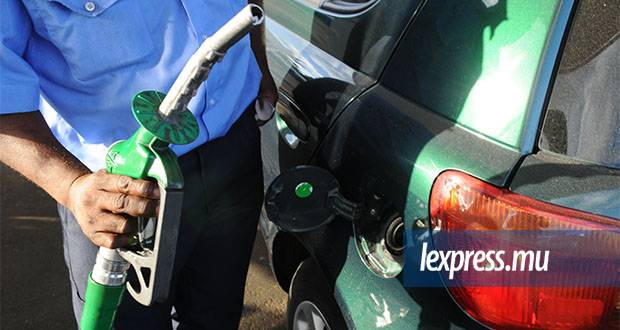Publicité
Recognition Technology: an Orwellian nightmare?
Par
Partager cet article
Recognition Technology: an Orwellian nightmare?

Your face is different from everyone else. It helps you enter buildings, open your bank account and unlock your iPhone.
However, capturing your face on camera is also the subject of recent data protection laws and a topic much mulled over by politicians, human rights activists and citizens who believe we are entering an Orwellian “Big Brother” world of control through technology.
From recognising facial features of genetic disorders to tackling the illegal trade in chimpanzees, the possibilities of facial recognition is opening up new potentials, and could also positively impact on your business.
The facts as they stand
- When used properly, facial recognition software is accurate and it works
- A real-time watch-list can be updated by the police on the move, alongside facial recognition technology on different devices
- The technology can also be used in police vehicles and used with body worn cameras
In the UK, at the recent BRIT awards, CCTV and mobile phone cameras were used in conjunction with a facial recognition database for scanning potential terrorist suspects on a watch list. Meanwhile, Customs and Border Protection (CPB) in the United States recently implemented the ‘biometric entry-exit system’ to identify passengers on some 16,300 flights every week.
Facial recognition technology – in a nutshell
Essentially, this is a software that correctly identifies faces – indeed, this technology has been developed to identify individuals out of tens of thousands of potential matches. Technology companies are now using artificial intelligence machine learning to recognise faces from huge data sets.
A Frictionless Society
When was the last time your stress levels became elevated over something as simple as locating your car keys, forgetting your password or fumbling in your pocket for a ticket you just can’t find? The answer is likely very recently, as these are just some of the frustrating day-to-day events that happen, leaving us feeling irritated.
Well imagine living in a frictionless society – no keys, no cards, no cash, no tickets, no passwords or signatures; all you need is your face.
Self-service
By utilising the latest technology, facial recognition can save time and improve efficiency in the workplace.
For supermarkets, self-service checkouts are becoming more commonplace as technology revolutionises the retail sector. But they still require a level of human intervention when it comes to verifying customers’ age for age-restricted products.
With facial recognition technology, age verification can be done without staff assistance. It is accurate – plus or minus five years – and will alert the cashier if the consumer looks below the age of 30. This creates a slicker process for buying goods such as alcohol for both staff and customer.
VIPs and troublemakers
When it comes to the retail sector, knowing the types of customers and people that come into your store is essential for good business. You want to know as much about your customers as possible; their age, interests, likes and dislikes, so you can target them and ensure you supply the products they want.
By identifying the faces of those who walk through the doors, this technology can give you key details such as, number of customers, visits, how long they stayed, where they went, their age and gender, and more. This allows you to specifically target your main audience, at the right time, in the right way. And it doesn’t stop there.
VIPs can be singled out, such as big spenders. Staff or even management can be alerted when they enter the store, opening an opportunity to greet these important consumers and offer them a fantastic shopping experience.
On the other hand, facial recognition technology offers an opportunity to stay ahead of shoplifters and troublemakers. Persons of interest can be captured as soon as they step foot in the shop, with security alerted instantly. All before they’ve had the chance to steal goods or cause problems.
Step this up another level, imagine how useful – if not potentially life saving – this could be if used in the public sector. In the interest of national security, criminals and terrorists could be stopped in their tracks before they’ve had the chance to commit the crimes they intend to.
Helping people help themselves
As well as businesses using the technology to protect themselves, they can use it to protect their customers. More than 2 million people in the UK are either problem gamblers or at risk of addiction, according to industry regulator The Gambling Commission, who also believe the government and industry are not doing enough to tackle the problem. But with facial recognition, this prevalent issue could be curbed.
Problem gamblers can be identified as soon as they walk through the bookies’ doors. But what if, for whatever reason, they are missed? This technology can be fitted to gambling machines, and as soon as problem gamblers are recognised, the machine will go in to self suspend mode. This helps people help themselves.
Data is the new currency
Paying for goods using a smartphone has become the new, modern way to pay. Soon, will you be paying using just your face?
These days, data is perceived as one of the most significant assets we have. Big data has facilitated businesses and organisations to create more bespoke experiences and forge closer relationships, leading to a generation of consumers who now expect this type of tailored communication.
The case for Mauritius
Many technology experts believe the debate has detracted from the more positive aspects of facial recognition software. This involves the use of cutting edge technology that helps with the safety and security of our towns and cities. Indeed, they argue the debate should be about the technology first rather than the problems of data security and the dearth of relevant up-to-date legislation.
With the help of Huawei, Mauritius has invested massively in this technology and will soon adopt facial recognition software, with the police and possibly paving the way for private sector companies among the early adopters of the technology. This means that the technology will significantly change the way that our police and security companies operate, helping to monitor people's movement, crowds, fight fraud, control immigration, tackle drug smuggling and combat crime. No bad thing, one could argue. Think of the monitoring of an ageing population or kids skiving school for example. But it is also important that we take into account the moral, legal and social policy considerations and recognising that a balance will need to be maintained where these principles appear to conflict. Observing these principles should enhance trust in biometric and forensic services.
Facial recognition- Ethics and Governing Principles
Ethics
Framework of ethical principles that should be taken into account when considering the deployment of live facial recognition or other automated biometric recognition technologies for policing purposes:
1. Public Interest. The use of this technology is permissible only when it is being employed in the public interest.
2. Effectiveness. The use of this technology can be justified only if it is an effective tool for identifying people.
3. The Avoidance of Bias and Algorithmic Injustice. For the use of the technology to be legitimate it should not involve or exhibit undue bias.
4. Impartiality and Deployment. If the technology is deployed for policing it must be used in an even-handed way. For example, it should not be used in ways that disproportionally target certain events, but not others, without a compelling justification.
5. Necessity. Individuals normally have rights to conduct their lives without being monitored and scrutinised. The technology should be used in ways that minimise interference with people engaging in lawful behaviour.
6. Proportionality. In addition to meeting a ‘necessity’ requirement, the technology should also meet a ‘proportionality’ requirement. That is, it can be permissible only if the benefits are proportionate to any loss of liberty and privacy.
7. Impartiality, Accountability, Oversight and the Construction of Watchlists. If humans (or algorithms) are involved in the construction of watchlists for use with the technology, it is essential that they be impartial and free from bias.
8. Public Trust. If the technology is to be used for policing it is important that those using it (either in operational deployments or trials) engage in public consultation and provide the rationale for its use.
9. Cost-effectiveness. Any evaluation of the use of this technology needs to take into account whether any resources it requires could be better used elsewhere.
Governing Principles
1. Procedures should be used to enhance public safety and the public good
2. Procedures should be used to advance justice
3. Procedures should respect the human rights of individuals and groups
4. Procedures should respect the dignity of all individuals
5. Procedures should respect and protect private life where this does not conflict with the legitimate aims of the criminal justice system to protect the public from harm
6. Scientific and technological developments should be harnessed to promote the swift exoneration of the innocent, afford protection and resolution for victims and assist the criminal justice process
7. Procedures should be based on robust evidence
Conclusion
No one would argue against any of the principles set down by ethical principles. Nevertheless, technologists hope that discussions will now be about the benefits of facial recognition for all members of society, including the value it can add for our safety and security. If properly implemented, the real debate needs to be about technology and how that can continue to develop, rather than implementing legislation to limit that technology and its uses to all walks of life.
Simon Appadu
(Innovation Expert and holds an MBA in Leadership and Innovation from University of Canberra)
Publicité
Les plus récents






